#Wuthering Heights And Wyverns
Explore tagged Tumblr posts
Text
Angria and Gondal
The Tale of Angria and Gondal in the Glass Town Confederacy, Exhumation Games, republished in 2004
Dungeons and Dragons is the first widely published tabletop roleplaying game... but not the first one written, nor even the first one to be distributed. So far as game historians can tell, that honor goes to The Tale, the name of a game invented and played by the Brontë sisters: Emily, Anne, Charlotte and Branwell. The game started development in or around 1826, and revolved around the fictional locales of Angria and Gondal and their inhabitants. From the Brontés' Blackwoods Young Men's Magazine (edited by "The Genius") to Far Beyond This Place, the play-by-mail game between Virginia Woolf, Sylvie Underwood, and Georgette Heyer, there was what we might now think of as a thriving underground RPG scene for nearly a hundred years.
Exhumation Games is a wife-and-wife team dedicated to the unearthing and reproduction of these earliest of game 'zines. They scan originals, track down rare reproductions, create PDFs, and place them on the Internet Archive. You can also find the two of them at conventions, selling them in booklet form at what must be very little profit if any.
The rules of The Tale are written in what we might now think of as a "Miss Manners" or FAQ kind of way. Things are a lot closer to online forum roleplaying than, say, Fate or Apocalypse World, but there are some distinguishing features that mark them as roleplaying games rather than freeform shared storytelling. Some of the rules from the Second Volume (edition) include things like:
When Telling The Tale, begin and end with a pinkie promise, so that all may know when this act has started and ended.
Good and kind Tale-Tellers do not make one another cry or shout.
When Writing The Tale, what is written cannot be unwritten, save by the agreement of all players that an error has occurred. Write with forethought.
Do not send a letter until you have received one, except to report an unexpected turn of events, after which, wait to receive two. Out-of-character missives may be sent at any time.
One cannot demand that another's character follow the events given them by history.
Mock not the words of the Genius!
The Genius shall adjudicate the greatest and most momentous of events by a means agreeable to all, or, should but one author disagree, then agreeable to all save one.
Quoits shall not be used as a method for adjudication.
Anything not described in the rules is entirely fair game. The examples of play included in The Tale show the players inventing unexpected twists, recovering memories from amnesiac characters, and even revealing that a character has returned from the dead! Players have a fair amount of authority over the world, and are expected to contribute to it.
The Genius, their GM equivalent, mostly handles disputes and compiles the new versions of the rules. Sometimes the resolution mechanics involved the skill of the players, sometimes the perceived or established skill of the characters, and sometimes pure a flip of a coin or toss of a die.
Early on, characters were described and established more or less at the whims of the sisters. As things went on, things became more formalized, so that by the 4th Official Revision each character was expected to have a biography of "not less than 75 words nor more than 150" that described their past and personality, in which key phrases were underlined in a manner very similar to HeroQuest. I really appreciate Exhumation Games publishing multiple editions of the game - it's fascinating to see how it evolved over time.
The art is entirely pen sketches, mostly of men, sometimes women, with the occasional map. The maps are sometimes even painted in with watercolors.
All in all, The Tale is a fantastic piece of RPG history. I'll see if I can review some of the later games in its lineage some day. Some games from the early days of modern RPGs don't really hold up today, but The Tale's later editions could still be played and enjoyed 200 years after they were written.
#rpg#indie ttrpg#ttrpg#imaginary#“Edited by the Genius” has big “Hacked by the Cracker” energy#Wuthering Heights And Wyverns
2 notes
·
View notes
Photo
@ariel-seagull-wings
You know, besides all the other stories I've mentioned that my WLW Beauty and the Beast retelling A Beast's Rose parallels (the Disney version, Romeo and Juliet, Wuthering Heights, etc.), I think it also has some parallels with Moulin Rouge! I actually posted about this a long time ago, before I had even named the characters.
Both have a dreamy, idealistic aspiring poet-songwriter as the protagonist, who meets a jaded young woman who lives with a found family in an "underworld" of sorts and has a reputation as a "bad girl" (to say the least). Against the odds they fall in love, support each other, and end up creating art together, eventually performing together in a play that the aspiring poet composes (even though in the case of my two girls, the audience is very small). There's also a powerful, dangerous man in the story who pursues the "bad girl" character (though fortunately, in my BatB retelling he's only part of the backstory – he died long before the main plot begins). In both, the lovers have some conflict late in the story and temporarily split up, but in the end they reconcile – yet sadly, immediately afterward, the "bad girl" dies in the poet's arms. (Though whether or not she stays dead is where they differ.)
I guess my BatB retelling is kind of like Moulin Rouge! transplanted to a woodsy fantasy setting, if Christian were a girl and Satine were a hideous 9-foot-tall wyvern-bat.
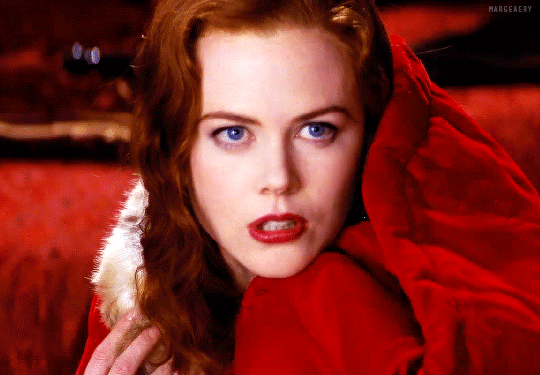

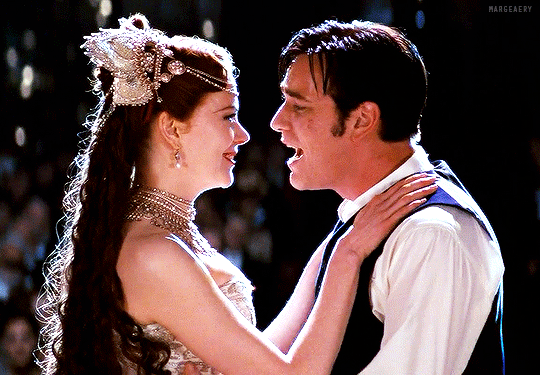
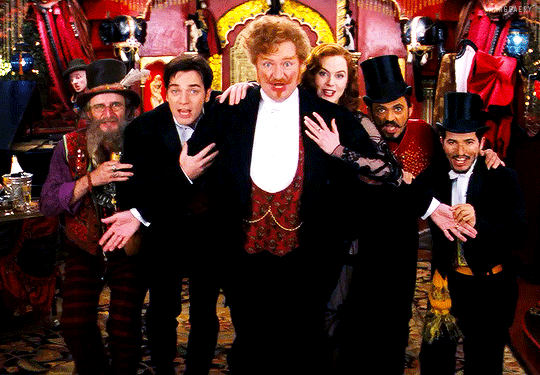
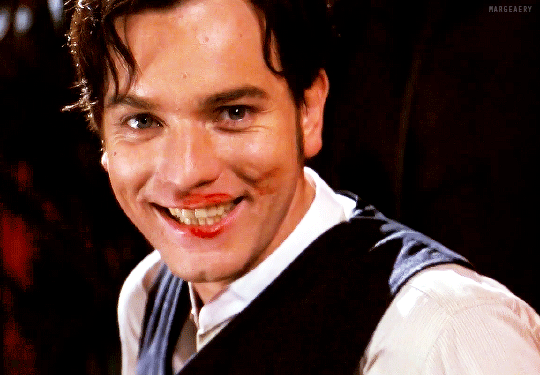
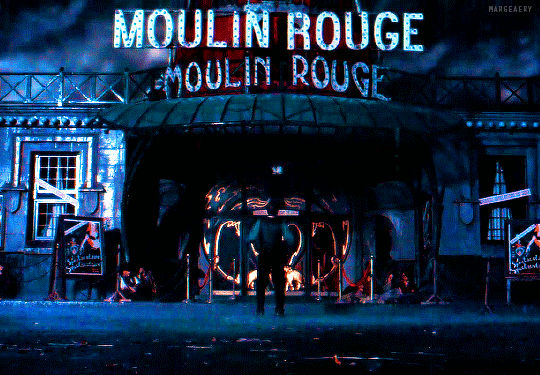
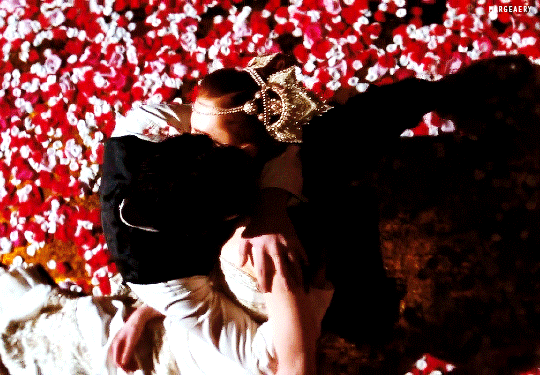
All my life you made believe I was only worth what someone would pay for me! But Christian loves me. He loves me. He loves me, Harold. And that is worth everything.
MOULIN ROUGE! (2001) dir. Baz Luhrmann | fave films watched in 2021
2K notes
·
View notes